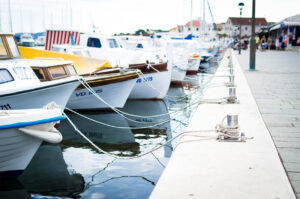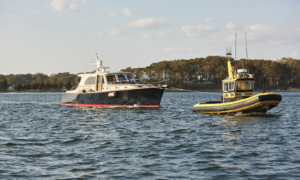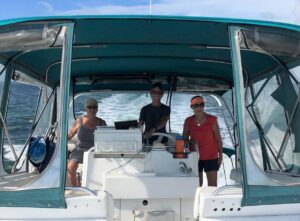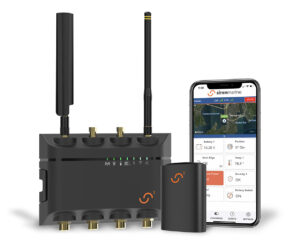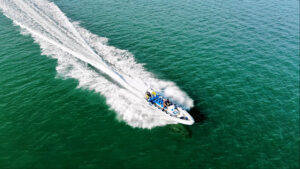
BOATERS SET OUT every day to enjoy the water, but unfortunately many do so in a mild state of denial. It’s an innocent but dangerous unwillingness to admit something could go wrong. They are understandably more focused on the day’s adventure. This is certainly the case with being prepared to find and retrieve a person who has fallen off a boat.
A primary skill in all boating courses is learning how to handle a person overboard (POB) situation. Persons on board need to know how to turn a boat around as quickly as possible to return along the same course line. This skill must extend to others onboard beside the captain, who may be the one who needs a lifeline.
Most GPS chart plotters have a POB feature that allows you to fix a position on the GPS screen at the point where someone goes overboard. That’s useful information, but it makes a dangerous assumption that someone noticed a crewmate went overboard. In many cases, those on the boat are not aware someone had tumbled into the water.
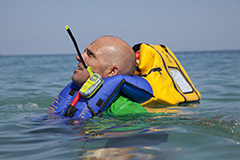
Fortunately, the marine safety equipment industry has addressed this problem with POB devices, designed to be worn by those onboard and will sound an alert at the helm that someone needs to be rescued.
The first step in selecting a POB device is to find one that will work best for your type of boating. Are you a couple cruising together? Do you boat as a family during daylight hours only in protected waters? Are children or pets aboard who need to be monitored? Are you fishing miles offshore in the ocean?
A POB situation is a terrifying event that should at all costs be prevented before it occurs. Prevention begins with getting past the denial that it could happen aboard your boat. Begin with pretending there is a 500-foot cliff on the opposite side of the boat’s railing and grave danger lies on the other side. Wearing life jackets and a POB device greatly increase the survival rate of someone falling overboard.
The following four different types of person-overboard systems are readily available, and each is suited to different types of boating. Some devices use a combination of these technologies.
Personal Locator Beacons (PLB)

PLBs work on the same principle as an emergency position-indicating radio beacon (EPIRB). They both transmit signals to search and rescue agencies, enabling them to locate the device. An internal GPS provides a position to rescuers, and the registration number identifies the individual who initiated the rescue. PLBs have become popular marine rescue devices. They are manually activated, which alerts search and rescue agencies. The problem with PLB’s is they don’t let anyone in the boat know you’ve fallen overboard, nor do they help that boat find you.
Proximity Alarms (PA)
PAs work by maintaining continual radio contact between an app on a smart phone or tablet and a crew fob worn by a person. If contact is lost, the alarm is triggered, notifying the helmsperson of a POB and marking the boat’s position on the app at that time. They are easy to set up, have compact crew fobs and are relatively low cost. The disadvantage to them is the POB icon on the app only shows the boat’s position when the alarm was triggered, not the actual location of the person in the water. Strong winds, tides and poor visibility can still make it hard to locate the POB.
Digital Selective Calling (DSC)
These alarms are self-contained personal locator beacons that send an automated POB alert and GPS position via the DSC system in VHF radios. The alert can be heard by all vessels in the area, including the host craft. The message is repeated on Channel 16 by an automated voice recording. By alerting all boats in the vicinity, they don’t just rely on the original vessel for rescue. Due to small antennas on the devices, the range of the VHF signal is limited, and they won’t automatically mark the POB’s position on a chartplotter.
Automated Identification Systems (AIS)
AIS devices transmit a unique POB signal that all vessels in the vicinity can see with an AIS receiver. Several manufacturers integrate DSC and GPS technology into the unit as well. Most units must be manually activated, but once done, they are the only device that will guide vessels to the exact location of the POB. AIS devices alone do not notify search and rescue personnel; however, when they have DSC combined, their transmissions may be received by rescue agencies monitoring VHF radios.
All these devices offer outstanding rescue capabilities. Select the one that best suits your type of boating, but remember the boat most likely and best suited to rescue a POB is the boat the person was on before falling into the water.


